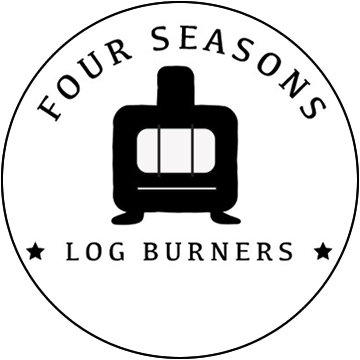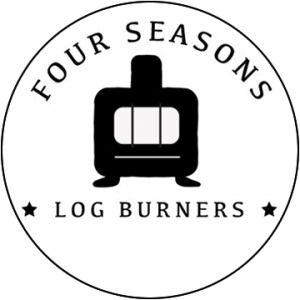Installing a multi-fuel stove or a log burner can be one of the most beneficial things you can do for your home; it can also quickly become one of the most dangerous if the appliance is not used correctly. These pieces of equipment can be incredibly safe but it is essential that they are used as intended because after all, where there is fire, there is a risk of an accident.
But there is no need to worry too much; our handy guide on the most important log burner and multi-fuel stove safety tips will ensure that you can enjoy your appliance.
Table of Contents
How To Use A Multi-Fuel Stove Or Log Burner Correctly
It might be easy to assume that once your appliance is installed, you can simply throw on some fuel and get started. While there may be some truth in this, owners must ensure that they use the correct type of fuel, have the appropriate ventilation system in place, keep family members clear of the fire and much more.
Using The Right Fuel For Your Stove
If you purchase a log burner, sometimes called a wood burning stove, then, as the name suggests, you will only be able to burn wood. Multi-fuel stoves, on the other hand, can be used for burning wood, coal, peat and smokeless fuels. If you live in a smoke control area, most people would opt for a multi-fuel stove as these typically allow you to burn more permitted fuels. But, provided that a log burner is DEFRA exempt, these can be used.
In any case, burning the correct type of fuel for your stove is essential. There are many different types of wood that you can use but some are not suitable for use in this type of equipment.
Avoiding Painted Or Treated Wood
When you burn wood that has been treated or painted, there will be a whole host of chemicals burning too. These will convert into gas and will be released into the air, potentially proving toxic to anyone who breathes in the fumes.
Even if you manage to get away without breathing in any of the gases, some of the remnants will remain in the ash and you may be exposed to these during clean-up. While there may be short-term effects such as difficulty breathing, over-exposure to this could lead to long-term health problems with the airways including lung cancer.
Kiln Dried And Seasoned Wood
If you purchase wood from suppliers who prepare the logs especially for use in log burners and other domestic situations, then you will come across two choices; kiln-dried or seasoned. Now, both of these are suitable for use in log burners and multi-fuel stoves, but most would agree that kiln dried logs produce a better burn.
This is because they have been more thoroughly dried out and since logs need to have less than 20% moisture to burn efficiently, kiln-dried are more suitable. However, seasoned logs, which are left to air dry over a period of years, are still very popular for stove owners. It is also entirely possible to season your own wood and may choose to do this.
Using The Right Amount Of Fuel
It can be tempting to overload your stove with as much fuel as possible to save time putting it on over the course of its use. However, this can be detrimental to the operation of your multi-fuel stove or log burner since the air circulation will be dangerously reduced.
Fire needs oxygen to burn and stoves are designed in such a way that air can freely move around, further fueling the fire. But if you fill all of the available space with additional logs or coal, you are cutting off the air supply. Not only will this prevent your fire from thriving but it could also cause the stove to overheat and become damaged, often beyond repair. Since you have likely invested a fair amount of cash into installing your stove, we appreciate that you won’t want to have to replace it anytime soon.
Each stove will have a different fuel capacity and this will be detailed in your user manual. Before firing it up, always check what is the appropriate amount of fuel.
Chimney Maintenance
What many people do not realise when initially installing this type of equipment is that regular maintenance of your chimney is essential. The good news is that you won’t need to perform any of this maintenance yourself unless you really want to, but hiring a professional chimney sweep is the best option.
These people are trained to correctly and safely clean your chimney so that it does not become blocked with soot residue or debris. The cost of hiring a chimney sweep comes in at around £90 per visit but since it only needs to be done every six months, it isn’t going to break the bank. For more information on the importance of having your chimney swept, take a look at our guide here.
Avoiding Carbon Monoxide Poisoning
As of 2010, it is a legal requirement for all log burner owners to have a carbon monoxide detector installed. But even if it wasn’t the law, we would absolutely suggest installing this small yet crucial piece of equipment. It is also important to point out that your carbon monoxide detector must be placed in the same room as the wood-burning stove.
Carbon monoxide is often referred to as the silent killer. When fuel is burned, various gases are produced with carbon monoxide being one of them. For the most part, your flue or chimney will handle this gas and it will be released into the air. However, if, for some reason, your chimney malfunctions or becomes blocked, this harmful gas could be dispersed around your home.
When installing a carbon monoxide detector, you should always have the work carried out by a registered professional. This person will have the correct qualifications to ensure that the detector is fully functional and will be able to check everything once the installation is complete. This may incur an additional cost when setting up your home for a stove, but it is one that could potentially save your life.
Correct Ventilation
As we have already discussed, a stove needs a good amount of airflow to operate safely. This means that having appropriate ventilation in place is crucial. Without this, you would struggle to maintain a fire, and even if you did, the room would quickly fill with smoke.
For smaller stoves, namely those that are under 5kW, a ventilation system doesn’t need to be installed. However, for anything above this, you will need appropriate ventilation. Things can get a little complicated since the type and amount of ventilation you need will depend on how airtight the house is.
Furthermore, if correct ventilation is not installed, there is a risk of harmful gases coming into your home, such as the carbon monoxide we discussed in the previous section.
Additional Safety Tips
As well as making sure that your wood burner or multi-fuel stove is set up correctly with the right fuel, there are other things you should consider when using the stove. Most of these require nothing more than your common sense.
For example, it is imperative that children and pets are not allowed near the stove while it is burning. It may be useful to place a fireguard around the area, especially if you have smaller children who may not yet be able to follow instructions.
Furthermore, you should never attempt to operate the stove if you are under the influence of any substances. After an evening out during winter and one too many glasses of wine, it can be tempting to light the fire and warm up, however, your coordination and focus will be affected and this could lead to a serious accident.
As well as having your carbon monoxide metre in place, it is also important to have smoke detectors fitted. In addition, you should have a fire extinguisher close to hand so that, in the event of an emergency, you are able to quickly and effectively put out the fire.
Finally, we would always recommend removing any flammable items from within the vicinity of the stove. While the fire will typically be contained within the appliance, there is always an associated risk
Conclusion
When you first install a wood burner or multi-fuel stove, the excitement of getting your first fire burning can cause many people to dive in without thinking about safety. These types of appliances will usually function without any issues, however, if the simple safety rules that we have discussed in this post are not followed, there is a risk of accident or injury.

